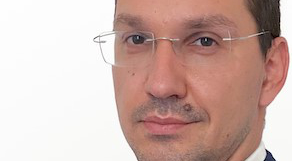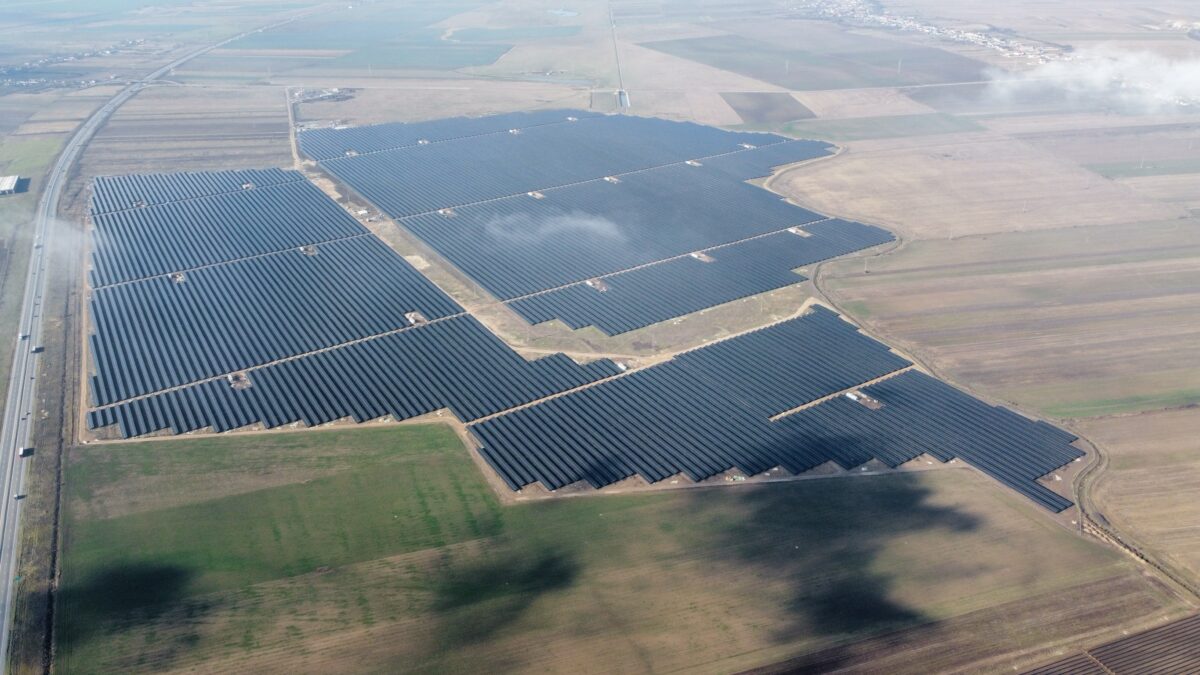During the COP28 climate summit in Dubai in December 2023, Romanian president Klaus Iohannis pledged to increase his country’s PV generation capacity to more than 8 GW by 2030. That would mark a sixfold increase on the 1.39 GW of solar in Romania in 2020.

Image: Econergy
By the end of 2023 – as Romania became the 118th member of the International Solar Alliance group of tropical nations – the country had reached 2.9 GW of solar.
Romania is positioning itself to become a major player in European Union renewables. Trade body SolarPower Europe’s latest European Union market outlook report ranked Romania among its top ten growth markets for the first time, alongside Germany, Spain, and the Netherlands.
In late 2023, the Romanian government raised the ambition of the draft National Energy and Climate Plan it presented to the COP. The new plan aims for 36% of Romania’s energy to come from renewables by 2030 – higher than the figure allocated it by the European Commission – with 8.3 GW of solar and 7.6 GW of wind. Bucharest has committed to phase out coal by 2032.
Econergy identified Romania as an important European renewables player at the end of the 2010s and has become a leading developer and investor in Romanian PV. We have learned where Romania’s bold commitments create opportunity, where growth is delayed, and how Romania is weathering current international challenges.
Solar regulation
Legislation has been introduced, since 2021, to ease solar deployment. For example, 2022 brought a legal amendment easing the use of agricultural land for PV until 2026, likely to maximize absorption of European Union funds during the bloc’s 2021-27 budget.
Improved permitting processes mean utility scale PV projects with a footprint of less than 50 hectares take an average of 6 to 12 months to secure permission, down from the previous 18 months, according to SolarPower Europe. The government is planning to tender for 2 GW of solar and onshore wind capacity in early 2024, using a first contracts-for-difference (CfD) mechanism for 15 years. Under CfD schemes, renewable energy generators bid a maximum tariff “strike price” they would accept from the government. Generators receive the strike price minus the day-ahead hourly wholesale price of electricity as a bonus on top of any payments they receive separately from the commercial sale of the power they generate. When wholesale prices are higher than the strike price, the difference is refunded to the government.
There are hurdles, however. Projects bigger than 50 hectares are not accelerating at the same pace, in part because of a Ministry of Agriculture ban on renewables sites of such scale on agricultural land. The Romanian Industry Association, investors, foreign industry, and the Romanian Wind Association want the ban lifted.
Global challenges
The International Energy Agency (IEA) estimates at least 3 TW of global clean energy projects are waiting in grid connection queues, with half of them at an advanced stage of development. That is five times the amount of solar and wind installed in 2022 and Romania is not immune to such challenges.
Econergy’s first Romanian projects faced no grid connection hold-ups. Today the queue is around 50 GW, even if applicants lose their place if projects are not contracted within 12 months.
With the IEA estimating global grid investment needs to almost double by 2030, to more than $600 billion per year, Bucharest’s Grid Development Plan has dedicated more than €1 billion ($1.09 billion) to upgrading the network and adding interconnectors with neighbouring countries. Romania also stands to benefit from a European Union-wide €584 billion grid overhaul and has allocated more than €25 billion from its European Union, post-Covid Recovery and Resilience Fund (RRF) cash for businesses to invest in energy transmission.
The recency of Romania’s PV boom means it is well placed to ride the wave of urgent grid investment.
Ukraine war
The Romanian government, like many of its peers, capped energy prices after the inflation driven by Russia’s invasion of Ukraine. This has hit renewables investment even though the government pays part of the subsidy and legislators have promised new power projects will be exempt from the cap. The European Union has recommended removal of the price limit.
Despite that obstacle, industrial activity in Romania is growing, with international manufacturers who had left the nation to operate in Ukraine and Russia returning. The 2023 World Investment Report estimated foreign direct investment in Romania hit a record $11.3 billion in 2022.
Some 63% of respondents to a Romania attractiveness survey conducted by accountant Ernst & Young in 2023, said they planned to establish or expand operations in the country, up from 53% in 2022. Utility supply was cited as one of three top factors to drive Romanian economic growth. An end to the energy price cap, in 2025, will further boost confidence.
EU cash
While Romania’s RRF spending will improve electricity transmission, an avalanche of applications for clean energy project grants under the scheme overwhelmed ministries such that financing agreements were being signed in late 2023 for sites which must be completed by June 2024. While the European Union can consider late applications on a case-by-case basis, that is a time consuming affair and the volume of clean energy projects under development in Romania outweighs those under construction. In December 2023, the Ministry of Energy announced the project deadline has been extended to December 2024.
The outlook
While Romania suffers as much from an aging grid as many other nations, its regulatory framework is moving fast to address the issue. The political will is there, and international investors are seeing the opportunity Romania offers.
Econergy’s experience of developing in Romania – culminating in the recently connected 155 MWp Ratesti plant, the largest solar project in the country, providing green electricity to more than 100,000 households per year – has been characterized by abundant development land, high irradiation, stable electricity prices, and swift authorization. Econergy has 233 MW of projects under construction in the country and a pipeline of around 2 GW in development or ready to build. We are excited to continue building in Romania.
About the author: Bogdan Asanache is Econergy’s country manager for Romania. With 15 years' experience in renewable energy, he is involved in every strategic, financial, and operational aspect of the business: from structuring transactions to leading development activity to managing contractors and third parties. Yoni Levin, a business analyst for Econergy, also contributed to this article.
The views and opinions expressed in this article are the author’s own, and do not necessarily reflect those held by pv magazine.
This content is protected by copyright and may not be reused. If you want to cooperate with us and would like to reuse some of our content, please contact: editors@pv-magazine.com.



By submitting this form you agree to pv magazine using your data for the purposes of publishing your comment.
Your personal data will only be disclosed or otherwise transmitted to third parties for the purposes of spam filtering or if this is necessary for technical maintenance of the website. Any other transfer to third parties will not take place unless this is justified on the basis of applicable data protection regulations or if pv magazine is legally obliged to do so.
You may revoke this consent at any time with effect for the future, in which case your personal data will be deleted immediately. Otherwise, your data will be deleted if pv magazine has processed your request or the purpose of data storage is fulfilled.
Further information on data privacy can be found in our Data Protection Policy.